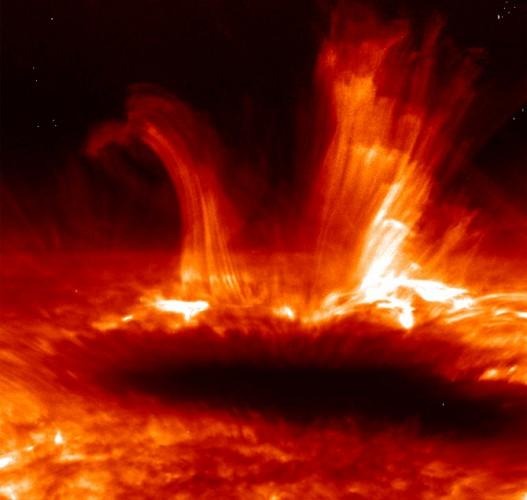NASA Launching IRIS Satellite Later This Month To Study The Sun
Back in April, we heard that NASA was preparing for its IRIS mission to the sun by getting the satellite ready for the launch. NASA announced that IRIS (short for Interface Region Imaging Spectrograph) will be launching on June 26 and will be put in Earth's orbit where it will have a peek into the suns lower atmosphere.
The satellite will be in orbit for around two years, and will use its ultraviolet telescope to zoom in and take high-resolution images. NASA wants to study the sun's lower atmosphere specifically, since that's where most of the sun's ultraviolet emissions are created, and they're responsible for the impact on Earth's climate.
This region of the sun's atmosphere is rather mysterious, and it's about 3,000 to 6,000 miles thick, but what makes it interesting is that it's constantly experiencing movements of heat and energy that helps heat the upper region of the sun's atmosphere to temperatures of around 1.8 million degrees Fahrenheit. That makes it some thousand times hotter than the actual surface of the sun.

IRIS will be launched with a Pegasus XL rocket, carried by an Orbital Sciences L-1011 aircraft that will take off from Vandenberg Air Force Base in California. Once the plane reaches altitude, the rocket will fire off until it reaches space, where the satellite will then be deployed and put in a polar orbit around the Earth in synchronicity with the sun.
The IRIS satellite weighs around 400 pounds, and when it's fully deployed, its solar panels will have a wingspan of 12 feet, so it'll be a fairly small satellite — about the size of a car, but it'll be moving pretty quickly, with each orbit taking only around 97 minutes to complete. This particular orbit was selected because it provides eclipse-free viewing of the sun for nearly eight months, as well as being strategically positioned over data receivers for which the satellite will use to send data back to Earth.
SOURCE: NASA
